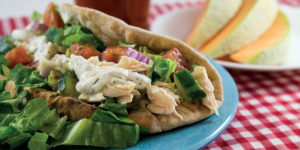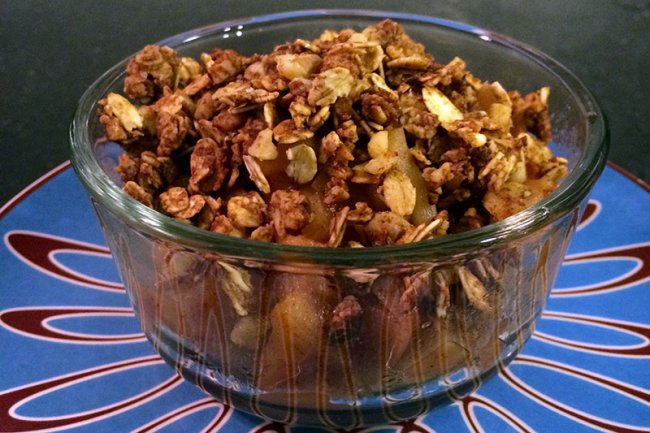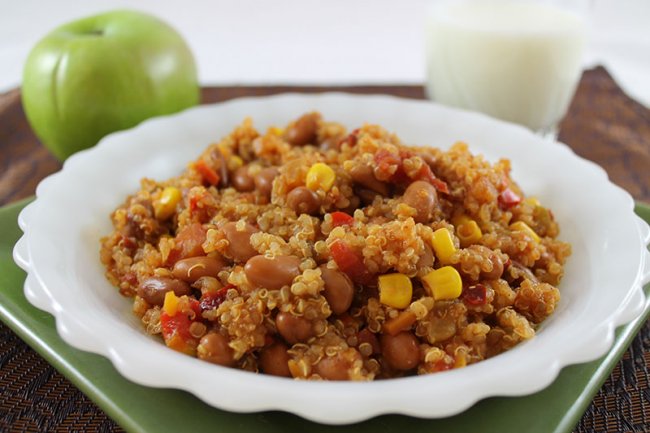
Fiber for Your Health
One of the biggest benefits of fruits and vegetables is fiber. It can also be found in whole grain foods like whole-wheat bread, bran cereals, oatmeal, and granola bars.
When looking for the amount of fiber on a nutrition label, you might see that it is broken down into two categories: soluble and insoluble.
Here we break down the definition, function, and sources of the two different types of fiber so that you can feel confident in knowing how each type of benefits your health.
What is fiber?
Fiber is the part of fruits, vegetables, and grains that we cannot fully digest, but this doesn’t mean it’s useless! Different types of fibers serve different functions.
Soluble fiber
Think of soluble fiber as a sponge. Once it enters the body after eating, it will soak up water and expand. It then turns into a gel-like substance. This “fiber gel” helps the food you eat move through your digestive tract easier, preventing constipation. It also slows down digestion and takes up space, helping you feel full.
Soluble fiber has also been shown to help lower cholesterol, regulate blood sugar, and maintain good gut health!
Insoluble fiber
Insoluble fiber also helps food move through the digestive tract, but it works differently than soluble fiber. Insoluble fiber does not dissolve in water and remains relatively unchanged throughout digestion.
The main function of insoluble fiber is to help add bulk to stool. It helps to bring water into your gut, but without absorbing it. This also helps to keep things moving through your digestive tract, keeping your bowel movements regular.
Sources of Fiber
Many fruits, vegetables, grains, and legumes have both soluble and insoluble fiber, so you may see some foods listed twice. You can find many of the foods listed below fresh, frozen, canned and/or dried.
Try incorporating more of these foods into your daily routine to help meet your goal.
| Soluble Fiber | Whole oats, nuts, seeds, legumes (beans, lentils), bananas, artichokes, broccoli, carrots, sweet potatoes, and apples |
| Insoluble fiber | Whole wheat bread, wheat bran, nuts, seeds, legumes (beans, lentils), asparagus, dark leafy greens, green beans, and cauliflower |
There are also lots of fiber-rich packaged goods that can make fitting fiber into your day easy. Cereals, granola, granola bars, and crackers are some examples of some foods that can be a good source of fiber without any prep!
When choosing a packaged food, take a look at the nutrition facts label and look under carbohydrates to find how much fiber there is per serving. Aim for at least 3g of fiber per serving when choosing between products, if possible.
How much fiber should I have in a day?
The answer is, it depends! Use the chart below to find out what you and the rest of your family’s daily fiber goal should be.
| Age | Recommended Amount of Fiber (grams) |
| Children (1-3 years) | 19g |
| Children (4-8 years) | 25g |
| Female (9-13 years) | 26g |
| Female (14-18 years) | 26g |
| Female (19-50 years) | 25g |
| Female (50+ years) | 21g |
| Male (9-13 years) | 31g |
| Male (14-18 years) | 38g |
| Male (19-50 years) | 38g |
| Male (50+ years) | 30g |
*From the Institute of Medicine
Ideas for your next high fiber meal
ONIE has plenty of options for you to choose from when it comes to high fiber recipes! Try any one of the recipes below which provide an excellent source of fiber (5g or more per serving) to help you reach your daily fiber goals.
Avocado and Black Bean Enchiladas (12g fiber)
You can thank the black beans in this recipe for providing the fiber here, plus it’s coated in rich enchilada sauce and melted cheese!

Butternut Squash and Tomato Posole (12g fiber)
This is our vegetable-packed take on a classic Mexican dish!

Chicken Ranch Pitas (8g fiber)
Can’t decide what’s for lunch? Try prepping a batch of these for the week!

Sweet Potato Turkey Bake (9g fiber)
Fill your kitchen with the wonderful smell of fresh sage and rosemary with this 30 minute oven dinner!

Walnut Oat Apple Crisp (6g fiber)
Dessert or breakfast? You decide! Pair this with yogurt or enjoy it by itself for a fiber-filled sweet snack.

–Zesty Quinoa Chili (7g fiber)
This recipe uses all frozen, dried and canned ingredients but still delivers in both flavor and fiber!

Summary
Fiber is needed to help keep us “regular” but it also provides us with additional benefits like lowering cholesterol and blood sugar levels, and helps to keep you full which can make it easier to maintain a healthy weight. Look for at least 3g of fiber per serving in prepackaged foods, and know what your daily fiber goal is.


